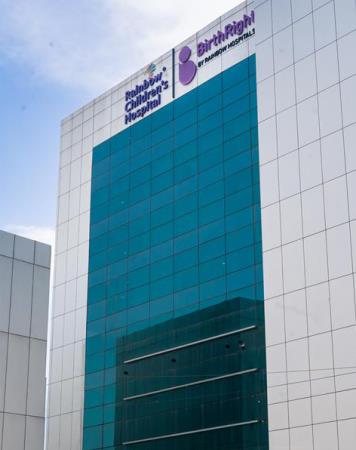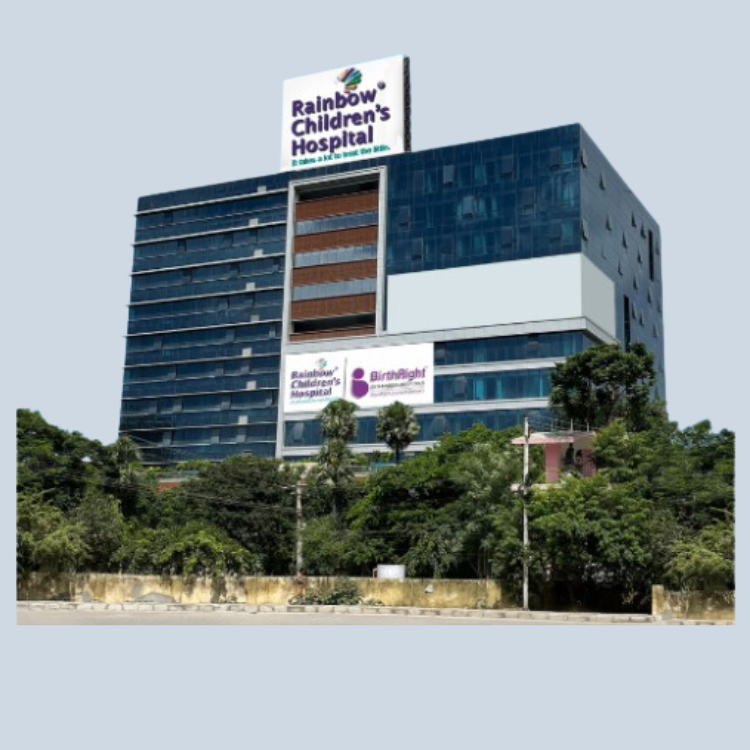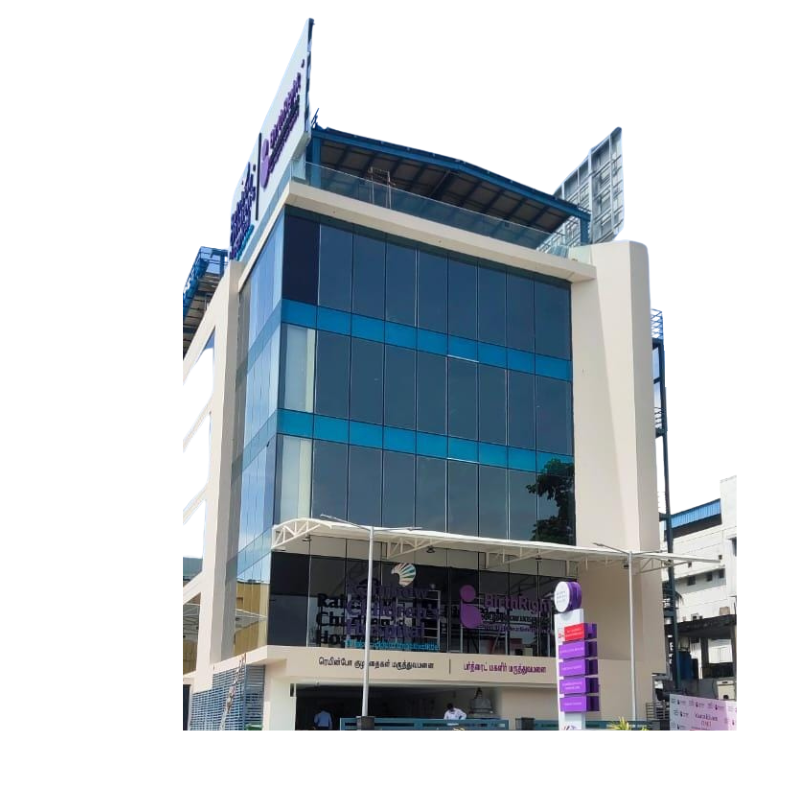Seamless support from diagnosis to post treatment care
Minimally Invasive and Endoscopic Neurosurgery
Overview
Minimally invasive and endoscopic neurosurgery techniques are designed to treat complex neurological conditions through smaller incisions, less disruption to surrounding tissues, and with the help of advanced lighted tubes called endoscopes. Endoscopes serve as small microscopes, magnifying critical anatomical structures so the surgeon can easily see the various diseased areas requiring repair, removal, or replacement.
Compared to traditional open surgery, minimally invasive approaches have greatly simplified the treatment of many intracranial (within the brain) ailments, and has reduced surgical complications, shortened hospital stay, lowered infection risk and minimized cosmetic concerns associated with major neurosurgical conditions. These techniques are widely used for treatment of all kinds of conditions affecting the head, neck and spine area, including brain and spine tumors, pituitary tumors, hydrocephalus, herniated discs, skull base tumors, and certain congenital abnormalities.
Diagnosis
Preoperative planning is critical to ensure the success of minimally invasive procedures. The common diagnostic tests typically performed prior to the surgery includes:
- Neurological assessment
- MRI and CT scans of the brain or spine
- Advanced 3D imaging or neuronavigation planning in complex cases
- Endoscopic assessments
Treatment
Minimally invasive and endoscopic neurosurgery focuses on achieving the same surgical goals as conventional open surgery but with reduced trauma to the patient. Some of the benefits of a minimally invasive surgery includes:
- Faster recovery time
- Less blood loss
- Less risk of infection
- Smaller incisions
Commonly Performed Minimally Invasive Neurosurgeries
- Endoscopic surgery: An endoscope has a camera and light at one end which offers surgeons a clear view of the surgical area. It allows them to operate with greater precision.
- Brain Microsurgery: The surgery is used to treat cerebrovascular conditions or tumors using microsurgical instruments. It helps surgeons to work precisely, working around delicate nerves and areas of the brain that control essential functions.
Post-Surgery Care
- Shorter ICU or hospital stay
- Early mobilization and minimal wound care
- Follow-up imaging to confirm surgical success
- Physical therapy, if required for rehabilitation and recovery
- Return to work or routine activities is typically faster compared to open surgery
Conditions Treated
- Pituitary adenomas and other skull base tumors
- Colloid cysts and intraventricular tumors
- Hydrocephalus
- Brain cysts and some vascular malformations
- Herniated lumbar and cervical discs
- Spinal canal stenosis
- Certain craniosynostosis and pediatric anomalies
Why Choose Us?
- Highly experienced team of pediatric brain and spine surgeons specialize in performing spine and scoliosis deformity correction surgeries.
- Multidisciplinary team works closely with neurosurgeons, neurologists, and intensivists
- Child-centric compassionate approach inspires us to create a child-friendly environment that helps young patients feel at ease throughout their treatment journey.
- Rehabilitation approach includes well-trained physiotherapists and rehabilitation specialists to provide a complete spectrum of spine care.
- 24/7 Emergency Care ensures immediate and expert intervention when needed.

Find a Doctor
Expertise you can trust, Meet our esteemed doctors who bring exceptional knowledge, compassion, and innovation to provide top-notch care for your health and well-being.
Our Hospitals and ClinicsOur Hospitals and Clinics
Rainbow Children's Hospital stands as a testament to the hospital's continual pursuit of excellence and innovation, providing specialized care for women and children.
Request a Call back
Tap to Fill FormRequest a Call back
Blogs
Discover our most recent health articles provided by our reliable experts.
What Are People Saying About Us
Embark on a journey of inspiration and hope with our patient success stories, complemented by informative videos from our dedicated doctors.
Quick Links
- Best Pediatric Neurosurgeons in Hyderabad
- Best Pediatric Neurosurgeon In Bangalore
- Pediatric Neurosurgeon in Delhi
- Pediatric Neurosurgeons in Chennai
- Best Pediatric Neurosurgeon in Vijayawada
- Best Pediatric Neurosurgeon in Vizag
- Best Pediatric Neurosurgeon in Hyder Nagar
- Best Pediatric Neurosurgeon in Marathahalli
- Best Pediatric Neurosurgeons in Guindy
- Best Pediatric Neurosurgeons in Currency Nagar
- Best Pediatric Neurosureon in Banjarahills
- Top Pediatric Neurosurgeons in India
- Best Treatment for Spina Bifida in Children, Hyderabad
- Best Treatment for Spinal Cord Injury in Children, Hyderabad
- Best Treatment for Arachnoid Cysts in Children, Hyderabad
- Best Treatment for Chiari Malformation in Children, Hyderabad
- Best Treatment for Glioblastoma Multiforme in Children, Hyderabad
- Best Treatment for Intraventricular Hemorrhage in Children, Hyderabad
- Best Treatment for Deep Brain Stimulation in Children, Hyderabad
- Best Treatment for Oligodendroglioma in Children, Hyderabad
- Best Treatment for Pilocytic Astrocytoma in Children, Hyderabad
- Best Treatment for Skeletal Dysplasia in Children, Hyderabad
- Best Treatment for Laser Ablation in Children, Hyderabad
- Best Treatment for Radiosurgery in Children, Hyderabad
- Best Treatment for Tethered Spinal Cord in Children, Hyderabad
- Best Treatment for Cavernous Malformations in Children, Hyderabad
- Best Treatment for Dysembryoplastic Neuroepithelial Tumor in Children, Hyderabad
- Best Treatment for Selective Dorsal Rhizotomy in Children, Hyderabad
- Best Treatment for Pial Synangiosis in Children, Hyderabad
- Best Treatment for Metopic Synostosis Trigonocephaly in Children, Hyderabad
- Best Treatment for Primitive Neuroectodermal Tumors (PNET) in Children, Hyderabad
- Best Treatment for Vein of Galen Malformation (VOGM) in Children, Hyderabad
- Best Treatment for Intraoperative magnetic resonance imaging (iMRI) in Children, Hyderabad
- Best Treatment for Spina Bifida in Children, Bengaluru
- Best Treatment for Spinal Cord Injury in Children, Bengaluru
- Best Treatment for Arachnoid Cysts in Children, Bengaluru
- Best Treatment for Chiari Malformation in Children, Bengaluru
- Best Treatment for Glioblastoma Multiforme in Children, Bengaluru
- Best Treatment for Intraventricular Hemorrhage in Children, Bengaluru
- Best Treatment for Deep Brain Stimulation in Children, Bengaluru
- Best Treatment for Oligodendroglioma in Children, Bengaluru
- Best Treatment for Pilocytic Astrocytoma in Children, Bengaluru
- Best Treatment for Skeletal Dysplasia in Children, Bengaluru
- Best Treatment for Laser Ablation in Children, Bengaluru
- Best Treatment for Radiosurgery in Children, Bengaluru
- Best Treatment for Tethered Spinal Cord in Children, Bengaluru
- Best Treatment for Cavernous Malformations in Children, Bengaluru
- Best Treatment for Dysembryoplastic Neuroepithelial Tumor in Children, Bengaluru
- Best Treatment for Selective Dorsal Rhizotomy in Children, Bengaluru
- Best Treatment for Pial Synangiosis in Children, Bengaluru
- Best Treatment for Metopic Synostosis Trigonocephaly in Children, Bengaluru
- Best Treatment for Primitive Neuroectodermal Tumors (PNET) in Children, Bengaluru
- Best Treatment for Vein of Galen Malformation (VOGM) in Children, Bengaluru
- Best Treatment for Intraoperative magnetic resonance imaging (iMRI) in Children, Bengaluru
- Best Treatment for Spina Bifida in Children, Delhi
- Best Treatment for Spinal Cord Injury in Children, Delhi
- Best Treatment for Arachnoid Cysts in Children, Delhi
- Best Treatment for Chiari Malformation in Children, Delhi
- Best Treatment for Glioblastoma Multiforme in Children, Delhi
- Best Treatment for Intraventricular Hemorrhage in Children, Delhi
- Best Treatment for Deep Brain Stimulation in Children, Delhi
- Best Treatment for Oligodendroglioma in Children, Delhi
- Best Treatment for Pilocytic Astrocytoma in Children, Delhi
- Best Treatment for Skeletal Dysplasia in Children, Delhi
- Best Treatment for Laser Ablation in Children, Delhi
- Best Treatment for Radiosurgery in Children, Delhi
- Best Treatment for Tethered Spinal Cord in Children, Delhi
- Best Treatment for Cavernous Malformations in Children, Delhi
- Dysembryoplastic Neuroepithelial Tumor in Children, Delhi
- Selective Dorsal Rhizotomy in Children, Delhi
- Pial Synangiosis in Children, Delhi
- Metopic Synostosis Trigonocephaly in Children, Delhi
- Primitive Neuroectodermal Tumors (PNET) in Children, Delhi
- Vein of Galen Malformation (VOGM) in Children, Delhi
- Intraoperative magnetic resonance imaging (iMRI) in Children, Delhi
- Spina Bifida in Children, Chennai
- Spinal Cord Injury in Children, Chennai
- Arachnoid Cysts in Children, Chennai
- Chiari Malformation in Children, Chennai
- Glioblastoma Multiforme in Children, Chennai
- Intraventricular Hemorrhage in Children, Chennai
- Deep Brain Stimulation in Children, Chennai
- Oligodendroglioma in Children, Chennai
- Pilocytic Astrocytoma in Children, Chennai
- Skeletal Dysplasia in Children, Chennai
- Laser Ablation in Children, Chennai
- Radiosurgery in Children, Chennai
- Tethered Spinal Cord in Children, Chennai
- Cavernous Malformations in Children, Chennai
- Dysembryoplastic Neuroepithelial Tumor in Children, Chennai
- Selective Dorsal Rhizotomy in Children, Chennai
- Best Treatment for Pial Synangiosis in Children, Chennai
- Best Treatment for Metopic Synostosis Trigonocephaly in Children, Chennai
- Best Treatment for Primitive Neuroectodermal Tumors (PNET) in Children, Chennai
- Best Treatment for Vein of Galen Malformation (VOGM) in Children, Chennai
- Best Treatment for Intraoperative magnetic resonance imaging (iMRI) in Children, Chennai
- Best Treatment for Spina Bifida in Children, Vijayawada
- Best Treatment for Spinal Cord Injury in Children, Vijayawada
- Best Treatment for Arachnoid Cysts in Children, Vijayawada
- Best Treatment for Chiari Malformation in Children, Vijayawada
- Best Treatment for Glioblastoma Multiforme in Children, Vijayawada
- Best Treatment for Intraventricular Hemorrhage in Children, Vijayawada
- Best Treatment for Deep Brain Stimulation in Children, Vijayawada
- Best Treatment for Oligodendroglioma in Children, Vijayawada
- Best Treatment for Pilocytic Astrocytoma in Children, Vijayawada
- Best Treatment for Skeletal Dysplasia in Children, Vijayawada
- Best Treatment for Laser Ablation in Children, Vijayawada
- Best Treatment for Radiosurgery in Children, Vijayawada
- Best Treatment for Tethered Spinal Cord in Children, Vijayawada
- Cavernous Malformations in Children, Vijayawada
- Best Treatment for Dysembryoplastic Neuroepithelial Tumor in Children, Vijayawada
- Best Treatment for Selective Dorsal Rhizotomy in Children, Vijayawada
- Best Treatment for Pial Synangiosis in Children, Vijayawada
- Best Treatment for Metopic Synostosis Trigonocephaly in Children, Vijayawada
- Best Treatment for Primitive Neuroectodermal Tumors (PNET) in Children, Vijayawada
- Best Treatment for Vein of Galen Malformation (VOGM) in Children, Vijayawada
- Best Treatment for Intraoperative magnetic resonance imaging (iMRI) in Children, Vijayawada
- Best Treatment For Spina Bifida in Children, Vizag
- Best Treatment For Spinal Cord Injury in Children, Vizag
- Best Treatment For Arachnoid Cysts in Children, Vizag
- Best Treatment For Chiari Malformation in Children, Vizag
- Best Treatment For Glioblastoma Multiforme in Children, Vizag
- Best Treatment For Intraventricular Hemorrhage in Children, Vizag
- Best Treatment For Deep Brain Stimulation in Children, Vizag
- Best Treatment For Oligodendroglioma in Children, Vizag
- Best Treatment For Pilocytic Astrocytoma in Children, Vizag
- Best Treatment For Skeletal Dysplasia in Children, Vizag
- Best Treatment For Laser Ablation in Children, Vizag
- Best Pediatric Neurosurgery Doctors in Sarjapur Road, Bengaluru
- Best Pediatric Neurosurgery Doctors in Himayatnagar, Hyderabad
- Best Pediatric Neurosurgery Doctors in Anna Nagar, Chennai
- Best Neurologist Doctor near me in Chennai
- Best Neurologist Doctor near me in Hyderabad
- Top Neurosurgeons in Anna Nagar , Chennai - Rainbow Children's Hospital


















































